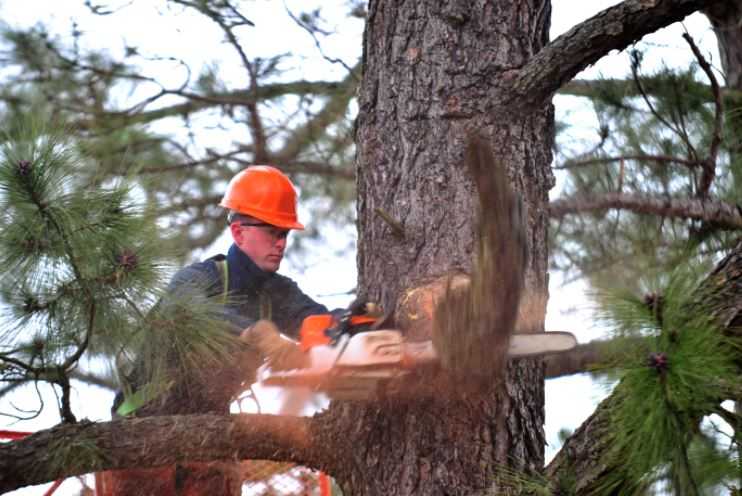Cutting down a tree yourself can save you a lot of money, but is it worth the risk? Before you pick up a ladder or chainsaw, learn about the dangers of DIY tree cutting.
Before you pick up a chainsaw, learn about the potential dangers of DIY tree trimming.
There are many reasons why you might need to cut down a tree on your property: a) to keep your yard clean, b) if the tree is rotting or threatening your loved ones or home, or c) to build another structure. While you may be tempted to do it yourself to save money, be aware that tree trimming and pruning is a dangerous process. It requires a lot of expertise in felling techniques, dangerous tools, and physics. Being aware of the dangers of tree cutting is important so that you can take the necessary safety precautions when doing your own tree cutting.
Common Tree Cutting Risks
- Falling trees and branches. – Tree cutting involves cutting off the branches and then eventually the tree itself. If you search YouTube, you will find dozens of videos of people cutting down trees just like you, falling on houses, cars, roads, utility poles, etc. If you have no experience in cutting down trees, you will certainly end up damaging your own or your neighbor’s property by misjudging the angle of the fall or underestimating the height of the tree. In the worst case scenario, you may end up like the man in Mississippi who died in a tree felling accident. Sadly, he is not the only tree felling story with a tragic ending.
- Falling from heights – One of the main dangers in working at heights is falling. This danger is compounded if you have to bend down away from your center of gravity to cut branches or if you are handling cumbersome tools.
- – A fallen tree can land on and damage the power lines you are cutting. If the tree hits the power line, there is a risk of electrocution and even a fire.
- Injuries from tools. – OSHA requires tree-trimming professionals to use head-to-toe protective gear. They are also required to undergo extensive training in the proper use of dangerous equipment such as chainsaws, ropes, cranes, and wood chippers to successfully and safely cut, trim, and dispose of trees. Members of the public who attempt to do the work themselves, without safety equipment and expertise in the use of tools, run the risk of injury or death.
Laws Regarding Cutting Down of Trees
Not surprisingly, there are places where you are not allowed to cut down trees just because they are on your property. Be sure to check your state and local laws so you don’t accidentally break the law and get in trouble with the authorities. Here are some things to keep in mind
- Depending on where you live, the age of the tree, its location, your health, and whether or not it poses a danger to property or life, you may not be allowed to cut it down, no matter how much you want to.
- You may need to get permission from the relevant government agency to remove a tree on your property.
- Conversely, some states have the right to remove trees from private property that may affect the health and safety of other trees or people. However, the government agency involved must first notify the owner to remove the tree on their own.
While it may seem like a good idea to cut down the trees yourself, it’s actually not worth the risk. It is highly recommended that you hire a professional arborist.
